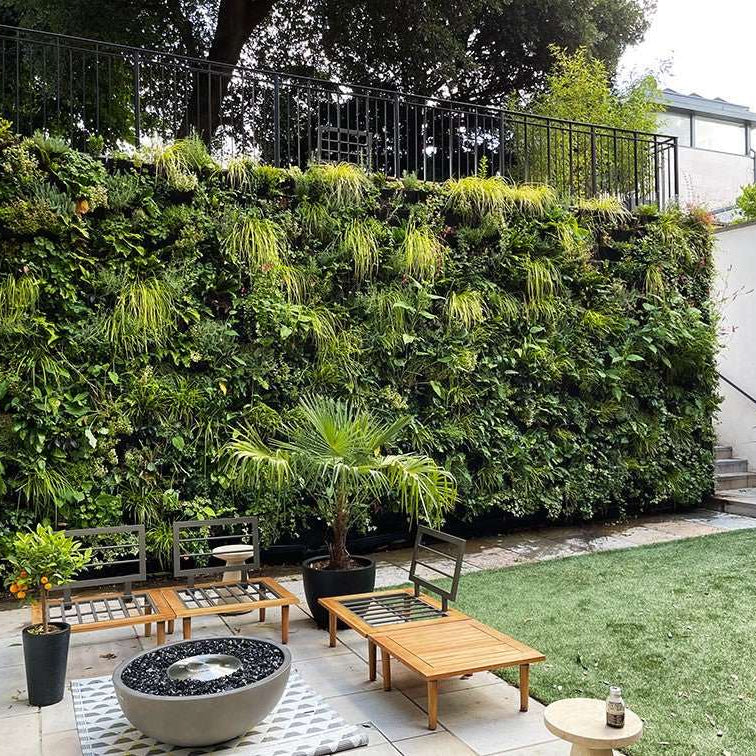With Storm Amy bringing the first strong winds and heavy rain of the season, many Irish gardeners are asking what steps to take to protect their gardens.
On this week’s Gardening Q;A with Patricia Messinger on C103, I tackled questions that ranged from identifying unusual plants to dealing with moss in lawns and knowing the best time to plant apple trees.
If you’re gardening in Ireland this autumn, here are some timely tips and insights that will help you prepare for the storm, keep houseplants healthy, and make the most of the planting season.
You can listen back to the full C103 Gardening Q&A episode below by clicking on the link below - the Play Button will just play a clip so click on the link if you want the full episode
Storm Amy and Garden Preparation
The first named storm of the season, Storm Amy, is set to bring heavy rain and strong winds. While our gardens certainly need rain after the summer drought, sudden downpours can quickly lead to waterlogging.
-
Move tender plants to a sheltered spot.
-
Check pots and containers have drainage holes to prevent roots sitting in water.
-
Prune loose or dead branches from trees and shrubs to reduce the risk of breakage.
Storms may feel destructive, but they also recharge our water tables, so think of them as part of the natural cycle, as long as we take precautions.
Plant Identification: Leycesteria (Pheasant Berry)
A listener sent in a photo of a shrub with drooping flowers and berries. This turned out to be Leycesteria formosa, often called pheasant berry or pheasant flower.
-
Good for biodiversity: Provides food for birds and insects.
-
Growth habit: Vigorous, spreading shrub that can quickly dominate small gardens.
-
Recommendation: Leave it if you have space, remove it if it overwhelms your border.
It’s not listed as officially invasive in Ireland but behaves aggressively in smaller spaces.
Caring for Clivia (Clivia miniata)
Another query was about a striking orange-flowered houseplant. This was identified as Clivia miniata, a plant native to South Africa.
-
Flowering care: After blooms fade, remove the entire flower stalk to prevent seed formation and encourage repeat flowering.
-
Leaf tips turning brown: Likely fungal infection caused by overwatering. Remove the whole affected leaf back to the base.
-
Watering rule: Clivia, like most houseplants, thrives on the dry side. Only water when the compost is dry and the leaves begin to droop.
- Tip: Most Irish houseplant deaths come from kindness, too much water rather than too little.
How to Care for Pansies in Ireland
One gardener was gifted a tray of pansies and wasn’t sure how to care for them. The good news is pansies are among the easiest bedding plants:
-
Keep them outdoors, they’re fully hardy in Irish winters.
-
Ensure free drainage to prevent black leaf spot, a common fungal issue.
-
Deadhead spent blooms by pinching them off to prolong flowering.
Even with the storm, these cheerful little flowers will survive the season if not left waterlogged.
Why October is the Best Time to Plant Apple Trees
Autumn is the traditional time for tree planting in Ireland. While container-grown trees can technically be planted year-round, October and November are ideal:
-
Soil is still warm, encouraging root establishment.
-
Trees can be purchased bare-root, offering better value and, many would argue, stronger long-term growth.
-
Apples in particular do well when planted in autumn, giving them a head start before spring.
Tip: Always check for well-drained soil and stake young trees if planting in exposed sites.
Lavender vs Rosemary in Irish Gardens
A listener asked why their lavender had died but their rosemary thrived. Both are Mediterranean plants, preferring hot, dry conditions, but lavender is fussier in Irish weather:
-
Lavender struggles in wet or heavy soils, often becoming woody and dying back.
-
Rosemary is more forgiving, but both need full sun and free drainage.
-
Annual pruning keeps plants healthy and prevents them becoming straggly.
The main culprit? Overwatering or poor drainage.
Can You Use Old Fertiliser Granules?
Another question came from a gardener with a bag of old fertiliser in the shed. While most chemical fertilisers lose some potency over time, they are unlikely to harm plants.
-
Don’t apply in autumn feeding now encourages tender new growth that will be vulnerable to frost.
-
Best time to apply is spring, when plants are actively growing.
-
Organic alternatives such as compost or seaweed feeds are more resilient long term.
Moss in Irish Lawns, What to Do
Moss is a common issue in Irish lawns, especially after wet summers. While it can be embraced as a natural green carpet, if you want more grass than moss, consider these steps:
-
Scarify in autumn, rake or machine-scarify to remove moss and thatch.
-
Aerate compacted soil to improve drainage.
-
Adjust mowing height, cutting too low encourages moss.
Remember, moss thrives in damp shade. Reducing shade or improving soil structure makes the biggest difference.
Pruning Silver Birch Trees
Silver birches rarely need pruning, but when they do:
-
Winter is the best time for pruning.
-
Avoid hard cuts, never “top” the tree with a straight cut.
-
Reduce the crown by about 10% evenly, maintaining the natural oval shape.
-
If the trees are mature and tall, always hire a professional tree surgeon.
Safety first, birch wood can be brittle, and working at height is dangerous.
Conclusion
From storm-proofing to planting apple trees, these gardening questions highlight the seasonal challenges Irish gardeners face each autumn. Whether it’s embracing moss in your lawn or pruning silver birch, the key is to work with nature rather than against it.
For more tailored advice, explore my Garden Design Services or Planting Plan







